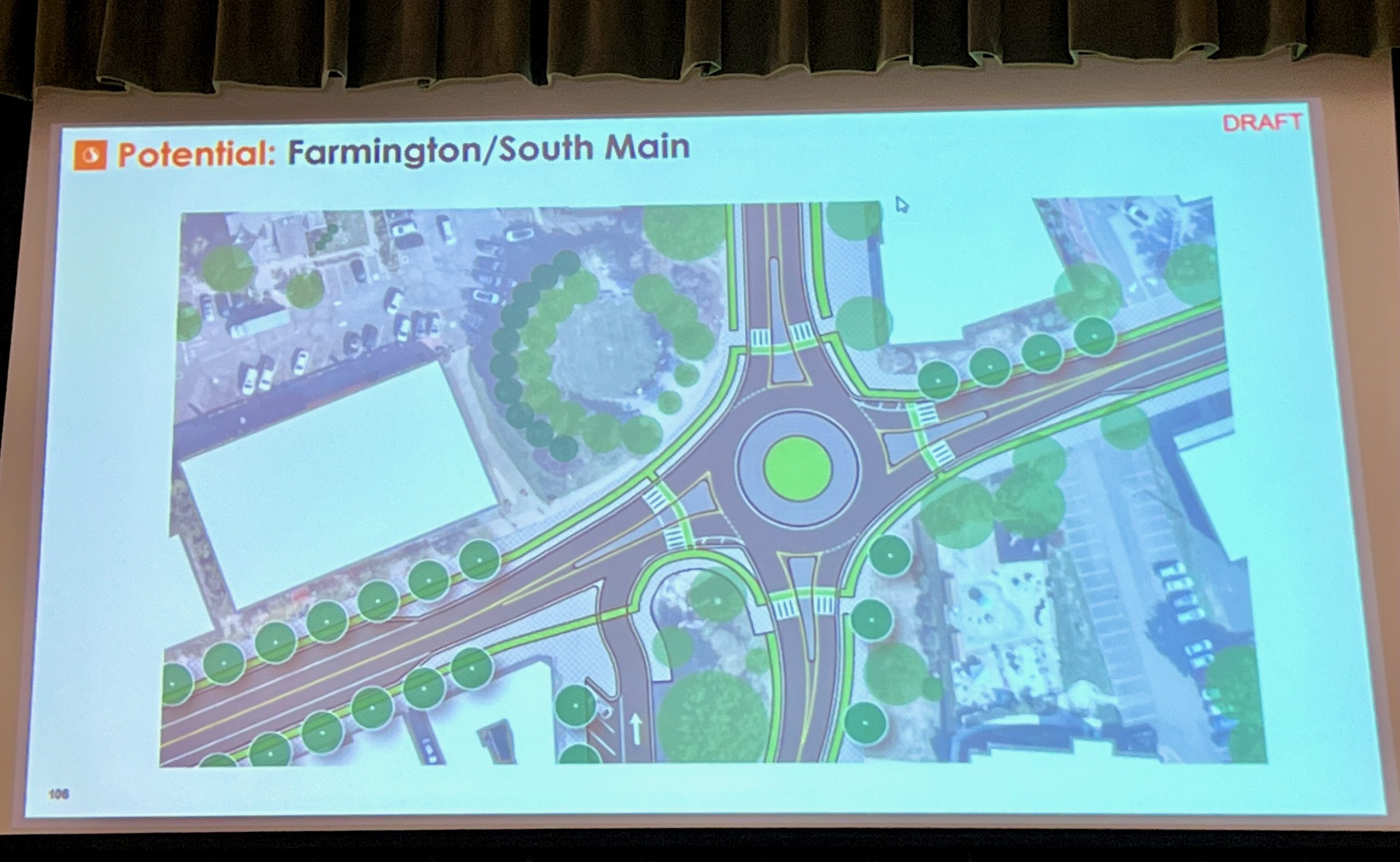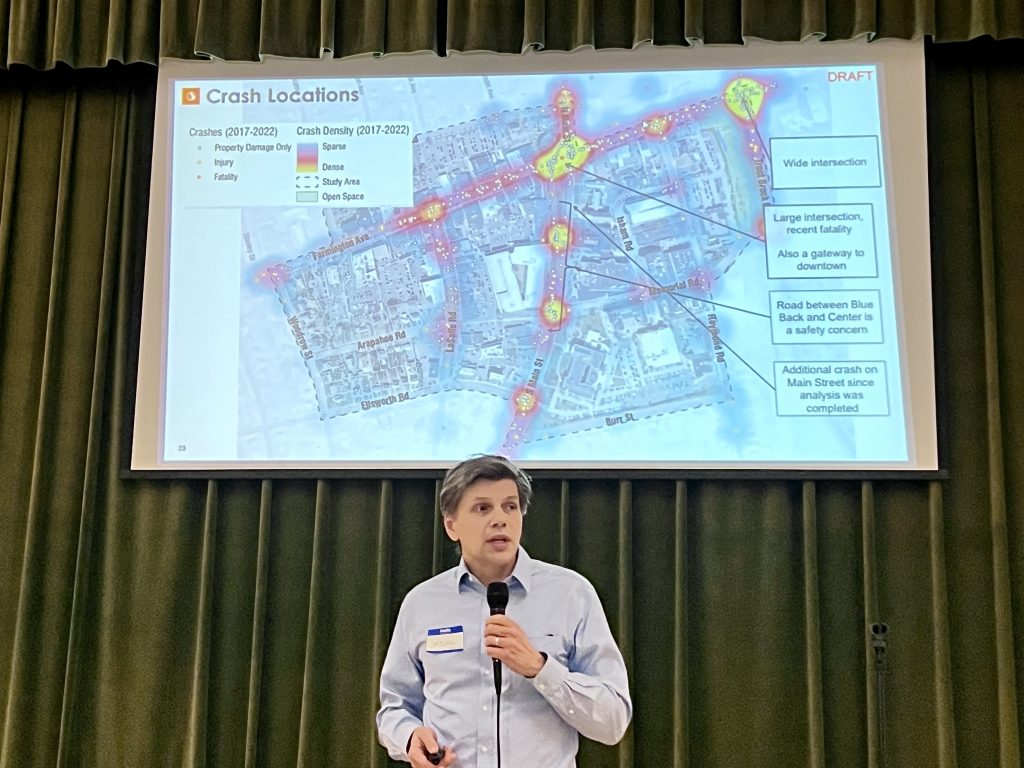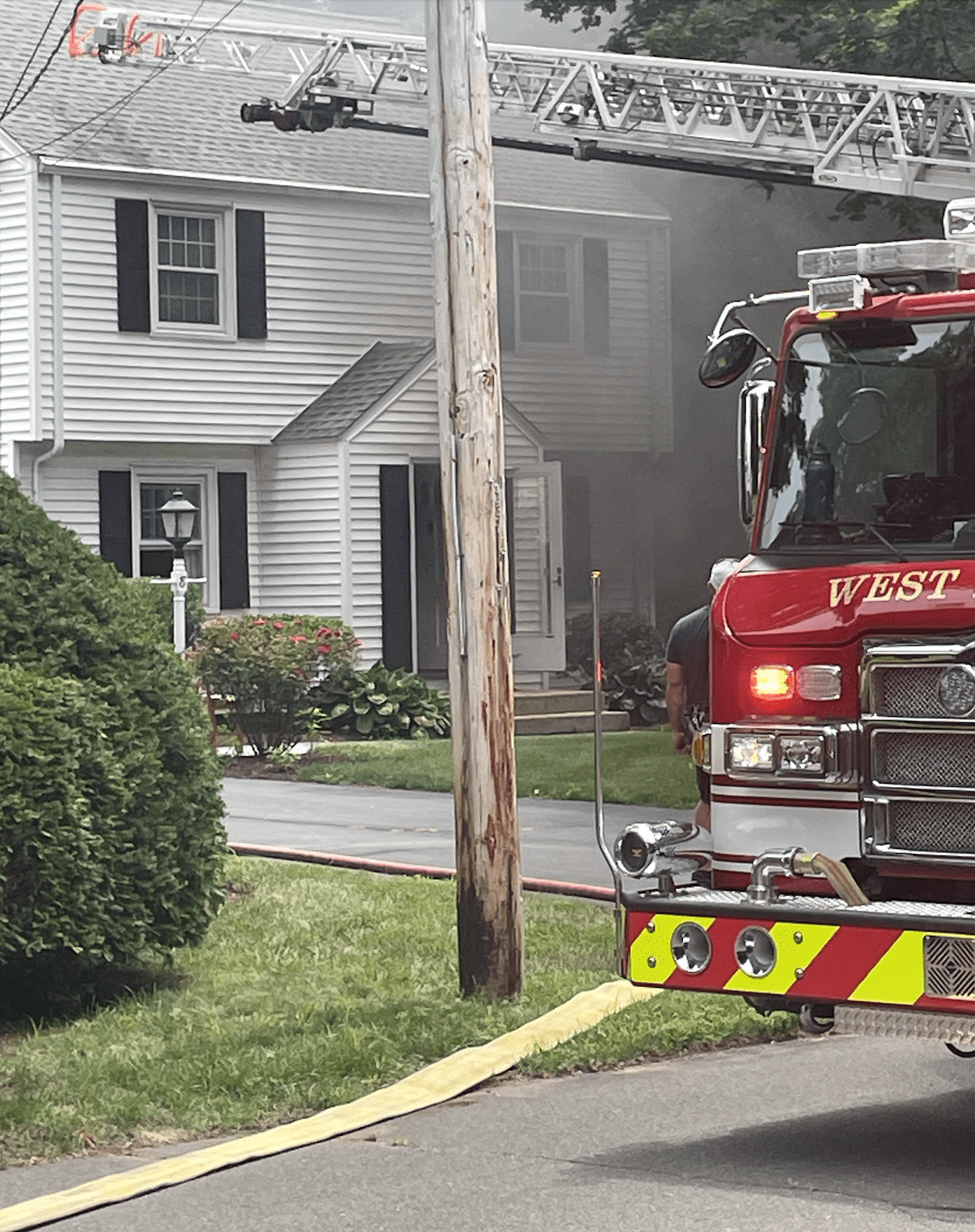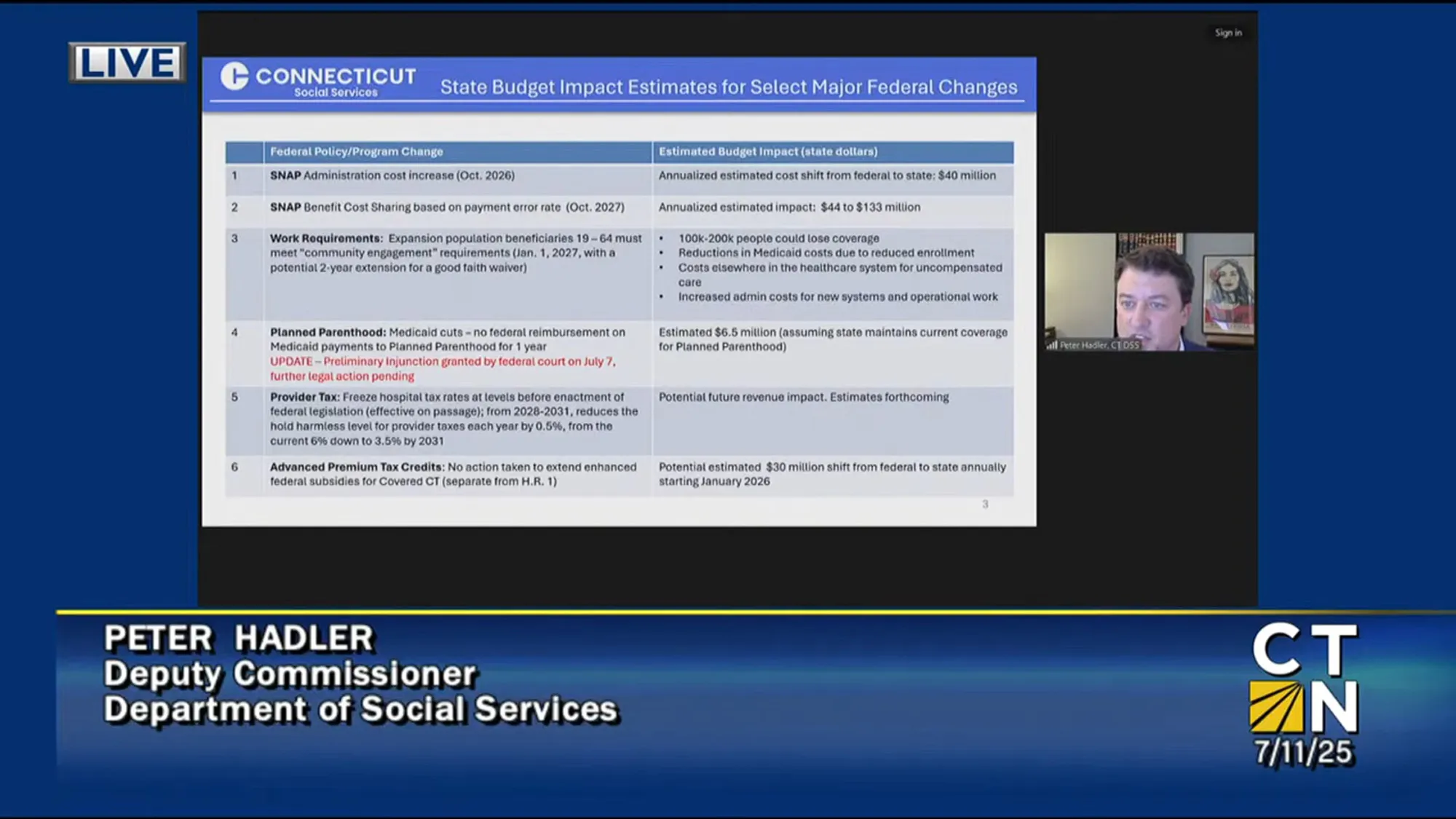Op-Ed: In Praise of Roundabouts

Audio By Carbonatix

A roundabout is one of the options that consultant Stantec noted could be a potential for the intersection of Farmington Avenue and North and South Main streets in West Hartford Center. Photo credit: Ronni Newton
Roundabouts can be a viable alternative to signalized intersections, providing traffic-calming and other benefits.
By Edward Pawlak
When you look at a “heat map” that displays the locations of motor vehicle crashes in West Hartford over the last five years, one pattern is immediately evident.

At a presentation of the West Hartford Center Infrastructure Master Plan in February, Stantec’s Jason Schreiber shows a heat map of crash sites in West Hartford Center and Blue Back Square. Photo credit: Ronni Newton (we-ha.com file photo)
The majority of crashes have occurred at the intersections of our larger roads controlled by traffic signals. And this comes as no surprise. The design of these intersections is not forgiving of the poor judgment of some motorists. These are places where motorists make split second decisions while traveling at rapid speeds, often with tragic consequences.
For example:
Rather than slowing down dangerous vehicle speeds, traffic signals often encourage the opposite – acceleration – when motorists speed up to “beat” a red light, putting all other road users at grave risk. Lefthand turns at these intersections are fraught, since they require crossing one or more lanes of oncoming traffic, which can result in deadly head-on or side crashes. These intersections are natural crossing points for pedestrians and bicyclists, which increases the risk of a crash involving these vulnerable users.
What if there were a low-tech alternative intersection design that could significantly reduce crashes, injuries and fatalities? In fact, there is: the roundabout.
A roundabout is a circular intersection in which vehicles travel in a counterclockwise direction around a center island without the aid of a traffic signal. If you have spent any time on Cape Cod you most likely have encountered them. They can also be found scattered across Connecticut.
Roundabouts offer multiple benefits compared to conventional signalized intersections:
- Drivers are forced to slow down when approaching, entering and moving through a roundabout, which significantly reduces the risk of serious and fatal crashes.
- There is no traffic light to “run” in a roundabout, which prevents dangerous accelerations through an intersection. You can’t “run” a roundabout like you can a traffic light.
- Because all motorists are traveling in the same counterclockwise direction, roundabouts eliminate dangerous head-on collisions.
- Research has found that roundabouts reduce crashes involving pedestrians and bicyclists compared with conventional signalized intersections.
- When the interior circular island of a roundabout is planted with trees, shrubs or other vegetation, the visual appearance of a long, straight and wide road is broken up, which reduces traffic speeds.
- Roundabouts even work when the power goes out. This is important, because police officers are freed up to perform other critical emergency functions, rather than directing traffic at an intersection where the lights are out. There are no expensive traffic signals to install or maintain in a roundabout.
- Compared with signalized intersections, roundabouts allow for more efficient traffic flow. Vehicles do not queue up in long lines as they do at conventional intersections, waiting for a green light. Instead, vehicles are continually entering and exiting the roundabout from all cross streets simultaneously. By eliminating queuing, air pollution at an intersection is reduced.
Motorists unfamiliar with how roundabouts operate may require some time and education before they learn how to safely navigate a roundabout. An educational program can enhance this learning curve.
West Hartford recently announced plans to become a Vision Zero community, in which fatal and severe traffic crashes are eventually eliminated. One of the most important things we can do to achieve this goal is to redesign our streets and roads, which currently encourage dangerous speeding. This will require installing a variety of proven “traffic calming” measures to reduce dangerous vehicle speeds.
I am hopeful that we will embrace the simplicity of roundabouts, and all of their benefits, and begin to install them at appropriate intersections in order to make this vision a reality.
Edward Pawlak is chair of the West Hartford Pedestrian and Bicycle Commission and a member of the Vision Zero Task Force.
We-Ha.com will accept Op-Ed submissions from members of the community. We reserve the right to edit all submitted content.
Like what you see here? Click here to subscribe to We-Ha’s newsletter so you’ll always be in the know about what’s happening in West Hartford! Click the blue button below to become a supporter of We-Ha.com and our efforts to continue producing quality journalism.




How in the world will anyone be able to cross the street? Pedestrians beware, please avoid all roundabouts for your own safety. No one will ever stop for you because they will be rear ended.